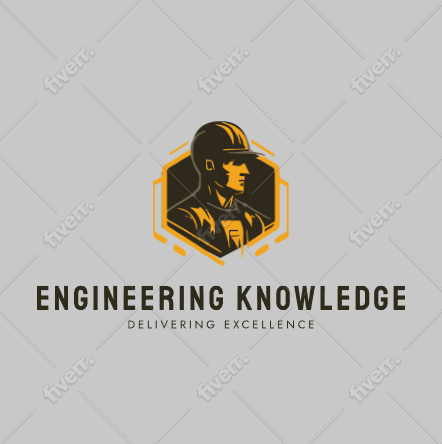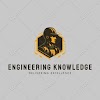Understanding the Basics of Cooling Tower Operation and Maintenance
What is a Cooling Tower?
- A cooling tower is a device that removes excess heat from a building or industrial process by expelling it into the atmosphere. It does this by transferring the heat from water to the air. Cooling towers are an integral component of HVAC systems in large buildings and crucial equipment in various industries, including power generation, petrochemicals, and food processing.
Components Of Cooling Towers:
A cooling tower consists of several components, including:
- The cold-water basin, which holds the cooled water before it is recirculated to the process it is cooling.
- The heat exchange surface, which facilitates the exchange of heat between the hot water and the air in the tower.
- The fill media, which increases the surface area of the heat exchange surface, enhancing the heat exchange process.
- The drift eliminators, which prevent water droplets from being carried out of the tower by the air stream, reducing water loss.
- The fan or fans, which move air through the tower in mechanical draft cooling towers.
- The pump, which recirculates the cooled water back into the process it is cooling.
- The water treatment system, which ensures that the water circulating in the tower remains clean and free from contaminants that could impact tower operation and efficiency.
- The control system, which monitors and regulates the operation of the cooling tower.
How does a cooling tower work?
- The function of a cooling tower depends on various factors, including the type of cooling tower and the process it is cooling. However, the fundamental principle remains the same: transfer heat from water to the air.
- Cooling towers primarily work by passing hot water over a heat exchange surface, which is in contact with air. Some of the water evaporates, creating a cooling effect that lowers the temperature of the remaining water. The cooled water is then recirculated back to the source for further cooling.
- The cooling process starts when hot water enters the cooling tower and passes over the heat exchange surface, which could be a series of tubes, fins, or a fill media. As the water flows over the heat exchange surface, it comes into contact with air, and some of it evaporates. The evaporative process generates an immense amount of latent heat, which cools the remaining water. The cooled water then exits the tower and returns to the process it is cooling.
- The heat exchange with the air in the cooling tower is facilitated by two mechanisms: natural draft and mechanical draft. Natural draft cooling towers exploit the buoyancy effect, while mechanical draft towers use fans to force air through the tower.
Types of Cooling Towers:
1). Crossflow Cooling Towers:
- Crossflow cooling towers are designed with water moving horizontally across the fill media while air flows vertically. The fill media is usually a series of PVC sheets or blocks arranged in a staggered pattern. Crossflow cooling towers are popular due to their compact design and ease of maintenance. They are commonly used in HVAC systems and light industrial applications.
2). Counter-flow Cooling Towers:
- Counter-flow cooling towers are designed with water moving vertically downward while air flows upward. The fill media is usually a series of PVC sheets or blocks arranged in a straight or curved pattern. Counter-flow cooling towers are popular due to their efficient heat transfer and optimal temperature control. They are commonly used in power plants, refineries, and heavy industrial applications.
3). Forced Draft Cooling Towers:
- Forced draft cooling towers use fans or blowers to force air through the fill media. This design creates a high-velocity air stream that enhances heat transfer and improves cooling efficiency. Forced draft cooling towers are popular due to their superior performance and flexibility in various industrial applications.
4). Induced Draft Cooling Towers:
- Induced draft cooling towers use fans or blowers to draw air through the fill media. This design creates a low-pressure air stream that enhances heat transfer and improves cooling efficiency. Induced draft cooling towers are popular due to their energy efficiency and quiet operation. They are commonly used in commercial and industrial applications.
5). Natural Draft Cooling Tower Systems:
- Natural draft cooling tower systems use the natural convection of air to draw it through the fill media. This design eliminates the need for fans or blowers, making it energy-efficient and cost-effective. Natural draft cooling tower systems are commonly used in power plants and other large-scale industrial applications.
6). Mechanical Draft Cooling Tower Systems:
- Mechanical draft cooling tower systems use fans or blowers to draw or force air through the fill media. This design provides greater control over cooling efficiency and temperature regulation. Mechanical draft cooling tower systems are commonly used in large-scale industrial applications that require precise temperature control.
| Type of Cooling Tower | Advantages | Disadvantages |
|---|---|---|
| Crossflow cooling tower | Easy to maintain, less prone to clogging. | Less efficient. |
| Counter-flow cooling tower | Highly efficient, smaller footprint. | More prone to clogging, difficult to maintain. |
| Forced draft cooling tower | Efficient, consistent airflow. | Higher energy consumption, more noise. |
| Induced draft cooling tower | Quiet operation, lower energy consumption. | less effective than cooling towers with forced draft. |
| Natural draft cooling tower system | No energy required, reliable operation. | Not suitable for all applications, expensive to construct. |
| Mechanical draft cooling tower system | Highly efficient, adaptable to different industrial processes. | Higher energy consumption, more expensive to operate. |
Operation of Cooling Towers:
The basic operating principles of a cooling tower can be broken down into three stages:
1). Inlet Air Wet Bulb Temperature:
- The first stage is the determination of the inlet air wet bulb temperature, which is the temperature of the air that enters the cooling tower. This temperature is typically measured using a thermometer with a wet wick, which is wrapped around the bulb to accurately measure the temperature of the air.
2). Water Distribution:
- The second stage is water distribution, which involves the delivery of water to the top of the cooling tower. The water flows down through a series of nozzles, which spray it onto the fill material. The fill provides a large surface area for the water to be exposed to the air, which maximizes heat transfer efficiency.
3). Airflow:
- The third stage is airflow, which is generated by a fan or natural draft. As the water flows through the fill, it is exposed to the airflow, which causes evaporation and cooling. The cooled water collects at the bottom of the tower and is recirculated back into the system.
- The key components involved in the cooling process include the fill, which provides the surface area for heat transfer, the drift eliminators, which prevent water droplets from leaving the tower, and the fan, which generates the airflow. Additionally, proper water treatment is essential for maintaining optimal cooling tower operation. Failure to maintain the proper chemical balance can lead to scaling, corrosion, and biological growth.
- To ensure efficient operation, cooling towers should be equipped with control systems that monitor and adjust the operation of the system in response to changing conditions. This can include adjusting the fan speed, water flow rate, and water treatment chemical dosing. Proper maintenance is also crucial for maintaining optimal performance and preventing equipment failure.
Maintenance of Cooling Towers:
One of the most critical aspects of cooling tower operation is regular maintenance.
- The maintenance tasks for cooling towers can be divided into two categories: 1). routine and 2). preventive. Routine maintenance includes tasks like cleaning, inspection, and lubrication, while preventive maintenance involves more in-depth maintenance and repairs to prevent future problems.
- Regular cleaning of cooling towers is essential to prevent the buildup of bacteria, mold, and dirt, which can negatively impact cooling performance and lead to health hazards. This can be achieved through power washing or chemical cleaning, depending on the type of cooling tower and the extent of buildup.
- Inspection of cooling towers is another crucial routine maintenance task. During inspections, cooling tower personnel should check for leaks, rust, corrosion, and other signs of wear and tear. Regular inspections can help identify potential issues before they become more severe and costly to repair.
- Lubrication of moving parts is also an important routine maintenance task. Proper lubrication can extend the lifespan of cooling tower components and prevent unnecessary wear and tear.
- Preventive maintenance encompasses more comprehensive maintenance tasks and repairs. This can include replacing worn-out parts, repairing cracks or leaks in the cooling tower structure, and upgrading components to improve performance and efficiency.
- Regular monitoring of cooling tower performance is also essential for effective maintenance. Monitoring can help identify changes in cooling performance, water usage, and energy consumption, which can signal potential problems or areas for improvement.
Importance Of Cooling Tower Maintenance:
1). The Consequences of Neglecting Maintenance:
Neglecting maintenance tasks can result in decreased performance, higher energy consumption, and even safety hazards. Failure to implement routine maintenance practices can have severe consequences for your cooling towers. Here are a few such problems that might occur:
| Issue | Consequences |
|---|---|
| Scale buildup | Reduced heat transfer, higher energy consumption, increased risk of corrosion |
| Biofilm formation | Decreased airflow, increased risk of Legionella bacteria growth, higher energy consumption |
| Mechanical failure | Downtime, repair costs, compromised safety |
2). Benefits of Proactive Maintenance:
Implementing a proactive maintenance program can provide numerous benefits for your cooling towers. Here are some advantages:
- Reduced energy consumption and operating costs
- Improved heat transfer efficiency
- Extended lifespan of cooling tower components
- Reduced risk of Legionella bacteria growth
- Improved safety for cooling tower personnel and the surrounding environment
3). Effective Cooling Tower Maintenance Practices:
So, what are some essential maintenance practices for cooling towers? The following duties have to be carried out regularly:
- Inspecting cooling tower components for signs of wear and tear
- Cleaning the cooling tower and associated equipment
- Checking water chemistry and implementing appropriate treatment
- Lubricating moving parts as needed
- Monitoring performance and making adjustments as necessary
Additionally, it is essential to have a preventive maintenance plan in place. This plan should outline all maintenance tasks, their frequency, and responsible parties. By adhering to a proactive maintenance strategy, you can reduce the risk of mechanical failure and ensure the efficient and safe operation of your cooling towers.
Cooling Tower Efficiency:
1). Factors Influencing Cooling Tower Efficiency:
Several factors can impact the efficiency of cooling towers, including:
- Wet-bulb temperature.
- Airflow rate.
- Water flow rate.
- Temperature difference between the inlet and outlet water.
- Water chemistry.
Monitoring and controlling these factors can help optimize cooling tower efficiency.
2). Strategies for Improving Cooling Tower Efficiency:
Several strategies can be employed to improve the efficiency of cooling towers, including:
- Implementing proper water treatment to prevent scaling and fouling.
- Regularly cleaning and inspecting cooling tower components.
- Installing fans with variable frequency drives (VFDs) to adjust for changing cooling. demands.
- Consider using high-efficiency cooling tower fill material.
- Utilizing a cooling tower control system to monitor and optimize performance.
3). The Role of Maintenance in Cooling Tower Efficiency:
- Regular maintenance is crucial for the optimal performance and efficiency of cooling towers. Poor maintenance practices can lead to fouling, scaling, and reduced heat transfer efficiency. By implementing a proactive maintenance program, organizations can reduce downtime and repair costs while extending the lifespan of their cooling towers.









.jpg)




.jpg)


.jpeg)
1 Comments
For more details visit our website www.deltacoolingtowers.in
ReplyDelete